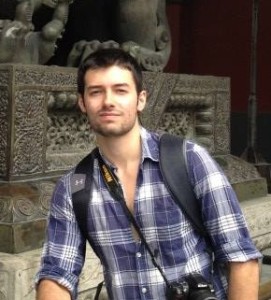Cultural Differences that Affect the Classroom in Taiwan

Being able to adapt to varying environments marks an experienced teacher. Moving to a new country and teaching a second language requires some give and take from coworkers, teachers, and students.

In this article, I will detail a couple of the cultural differences between Western teaching styles and styles I have seen in Taiwan.
Encouragement
A style that I have seen in many classrooms in the West is the, “You’ve got it! Keep on going!” style of teaching. It is the highly encouraging and happy way of getting students to continue working hard to accomplish their goals. This style is particularly popular with the younger age groups where children are just learning how to handle and deal with challenges.
Positive effects – This style differs from what students in Taiwan are accustomed to. It gives the students more of a sense of freedom when accomplishing tasks and assignments. Using positive words and complimenting on students’ successes creates confidence even during failure. It makes students feel comfortable with their own progress.
Negative effects – Students in Taiwan are accustomed to a strict set of rules that demand respect towards teachers and learning. Throughout their educational careers in Taiwan students need to become familiar with realities of Asian education where emphasis is put on the results. While the “You’ve got it!” style keeps students happy, they are still expected to pass a certain threshold.
Hugs and High Fives
At younger ages, occasional hugs and holding hands are common amongst most teachers. Students at those ages enjoy a degree of affection from those close to them.
Positive – A rule of thumb is the more comfortable an environment the more learning that will occur. Hugs and high fives allow children to feel they are in a safe place that encourages positivity and growth. It also allows for a deeper level of trust between students and teachers. If students know they can come to you for a hug, chances are they think you’re pretty great.
Negative – Too much contact with students will make them reliant on you anytime they need help. Students also need to learn to become self-sufficient. As they grow up, particularly in Taiwan, they will be under strict teaching practices and have many expectations placed on them. Students need to be able to find the strength within themselves to accomplish those goals.
You should also check before hand what is culturally appropriate, in some countries it is ok to give a student an encouraging hug, but in other countries this may be frowned upon, so always check to make sure that you don’t make a cultural faux pas.
Life is a give and take game. We always play a fine line between excess and deficiency. Teaching, like life, differs every single day – it’s one of the reasons I love it so much. There is always something new to learn and a better way of doing things.
Learning to find an appropriate balance between what you are comfortable giving up and not takes time. In the end, everyone finds a style they can work with, change, and evolve to continue growing, not only as teachers but as individuals.
Have you taught in another country? Did you notice some cultural differences? Do you have anything you would like to add to the list? Let us know in the comments section below.

In the summer of 2012 he traveled to Taiwan to study Chinese and wrote about his adventures in his blog: 三個月在臺灣 My Three months in Taiwan . He documented his adventures in Taiwan and China on his blog Where’s Your Inner Child? He is now back in Taiwan teaching English, traveling, and discovering what life has to offer. – See more at: Vadim Rubin, Author at Baltimore Post-Examiner



